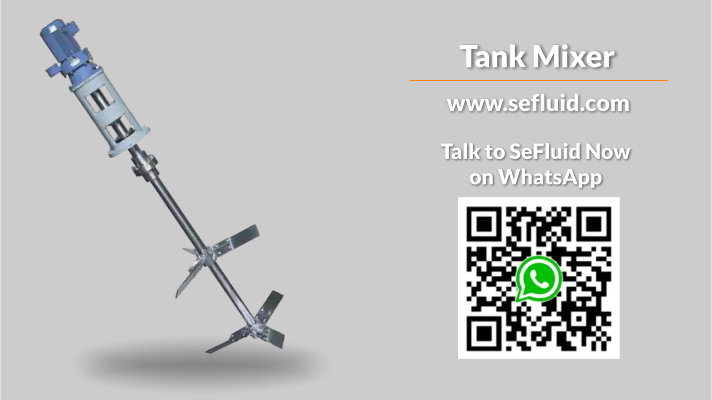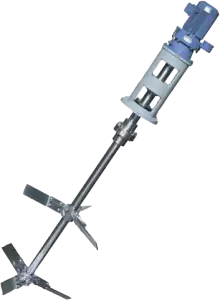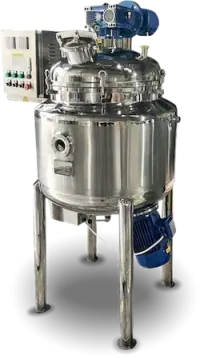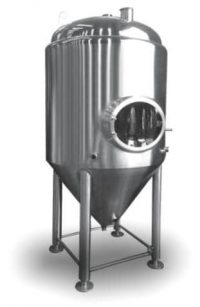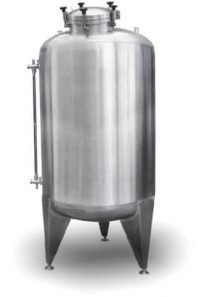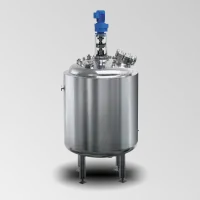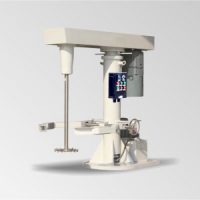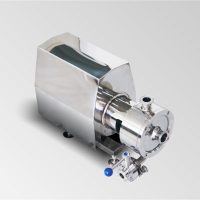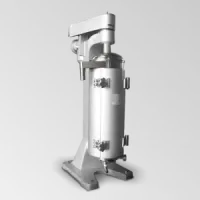
Introduction of Fermentation Tank
Fermentation tanks are specialized equipment used in the production of alcoholic beverages, such as beer, wine, and spirits. These tanks are designed to facilitate the fermentation process, during which yeast converts sugars into alcohol and carbon dioxide.
There are several types of fermentation tanks, each with its own unique features and capabilities. Some common types include conical fermenters, cylindrical fermenters, and open-top fermenters. Conical fermenters are commonly used in the brewing industry due to their ability to separate sediment and trub (yeast and protein particles) from the beer. These tanks have a cone-shaped bottom that allows for easy removal of sediment and trub, making them ideal for producing clear, high-quality beer. Cylindrical fermenters, on the other hand, are more commonly used in winemaking and distilling.
These tanks are designed to maximize surface area contact between the liquid and the air, promoting oxygenation and flavor development. Open-top fermenters are often used in the production of sour beers and lambics, as they allow for the introduction of wild yeasts and bacteria that contribute to the unique flavors of these styles of beer. Regardless of the type of fermentation tank used, proper cleaning and sanitization are crucial to maintaining the quality and safety of the final product. Regular maintenance and inspection of the tank’s seals, gaskets, and other components are also necessary to ensure optimal performance and longevity.
As a leading manufacturer of fermentation tanks, SeFluid offers a wide range of products suitable for various applications. Our fermentation tanks are available in different sizes and configurations, including horizontal and vertical designs, and we offer customization options to meet specific customer requirements. With our extensive experience in the industry, we are committed to providing high-quality fermentation tanks that deliver reliable performance and long service life.
Working Principle of Fermentation Tank
Fermentation tanks work on the principle of converting sugar into alcohol and carbon dioxide through the action of yeast. During the fermentation process, the yeast consumes the sugar present in the liquid medium and produces alcohol and carbon dioxide as byproducts. The fermentation tank provides a controlled environment for this process to occur. It is typically made of stainless steel or other corrosion-resistant materials and is equipped with a variety of features to monitor and control the fermentation process.
These features may include temperature controls, agitation systems, and aeration systems, among others. Temperature control is particularly important, as the optimal temperature range for yeast activity varies depending on the type of beverage being produced. Agitation systems are used to mix the liquid medium and promote even distribution of the yeast throughout the tank. Aeration systems are used to introduce oxygen into the liquid medium, which helps to stimulate yeast growth and improve the overall quality of the final product.
Once the fermentation process is complete, the liquid medium is typically transferred to another tank for further processing, such as aging or blending. The spent yeast and other solids are removed from the tank using a variety of techniques, such as filtration or centrifugation.
Overall, fermentation tanks play a critical role in the production of alcoholic beverages, providing a controlled environment for the conversion of sugar into alcohol and carbon dioxide. By carefully controlling the fermentation process, manufacturers can produce high-quality beverages with consistent flavor.

Specification
Power: 9.0-48 kw
Capacity: 200-000L
Material: SS304, SS316
Weight: 80-800 kgs
Applications
Fermentation tanks, also known as bioreactors, have widespread applications across various industries where fermentation processes are essential. Here’s a list of some key applications:- Food Industry:
- Brewing: In the beer industry, fermentation tanks are used to convert sugars extracted from malted grains into alcohol and carbon dioxide by yeast.
- Wine Production: Wine fermentation tanks hold crushed grapes while yeast converts sugar into alcohol.
- Sourdough & Bread Making: For fermenting dough to create sourdough bread and other fermented baked goods.
- Cheese Production: Fermentation is involved in curdling milk and developing unique flavors in cheese varieties.
- Pharmaceuticals and Biotechnology:
- Antibiotics Production: Many antibiotics like penicillin are produced through fermentation using microorganisms.
- Vaccine Production: Some vaccines require the growth and manipulation of viruses or bacteria in fermentation tanks.
- Biopharmaceuticals: The production of recombinant proteins such as insulin, monoclonal antibodies, and therapeutic enzymes involves cell culture fermentation.
- Biofuels Industry:
- Ethanol Production: Large-scale ethanol for fuel is made by fermenting sugars from crops like corn or sugarcane.
- Biodiesel: Microbial oil can be produced through fermentation which can then be converted to biodiesel.
- Chemicals Industry:
- Enzyme Production: Enzymes for industrial uses (e.g., detergents) are often produced via fermentation.
- Agriculture and Animal Feed:
- Single Cell Protein (SCP): Certain types of animal feed include fermented products that are high in protein content.
- Environmental Applications:
- Anaerobic Digestion: Fermentation tanks are used to break down organic waste materials to produce biogas, which can be used as an energy source.
- Cosmetics: Fermentation is increasingly used to produce active ingredients for skincare and cosmetic products, harnessing the power of beneficial bacteria and yeasts.
Request for Quotation
Talk To Us
We strongly recommend that you either click or scan the QR code below to talk directly with our sales engineers so that we can help you find the most suitable products for your application needs.






NEWS
CONTACT US
No 10, Jinhai Rd, Hefei, China 201400
Phone: +86 156 6910 1862
Fax: +86 551 5843 6163
sales@sefluid.com
FOLLOW US








